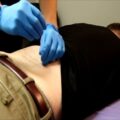There are a number of surgical and non-surgical treatments for focal hyperhidrosis. Management of generalised hyperhidrosis, on the other hand, involves addressing the underlying cause.
Over-the-counter antiperspirants
Usually tried first because they are readily available. Antiperspirants containing Aluminium chloride hexhydrate may be more effective when other antiperspirants have failed
Iontophoresis
Iontophoresis is a specialised treatment only available in some states. It utilises a delivery system for small polar molecules into the skin.
Oral medications
Propantheline bromide and oxybutynin are the most common anticholinergics used. Oral anticholinergic medicines are not commonly used for excessive sweating, because in order to work they often have side-effects such as dry mouth and blurred vision.
Botox (botulinum toxin)
The main mechanism of action is the inhibition of acetylcholine release from the sympathetic nerves that innervate the eccrine sweat glands. Medicare subsidises the use of botulinum toxin A for severe primary axillary hyperhidrosis in patients aged 12 years or more who have failed or are intolerant to topical aluminium chloride hexahydrate after 1–2 months of treatment.
Sympathectomy
Surgery is reserved for those refractory to medical therapy and in whom the hyperhidrosis is having a significant impact on their activities of daily living. Deep inside your chest, a structure called the sympathetic nerve chain runs up and down along your spine. During a sympathectomy, a surgeon cuts or clamps this nerve chain. This keeps nerve signals from passing through it.
The results, however, can be cosmetically unappealing and scarring can result in functional impairment. Patient demand for non-invasive, no-downtime procedures for the treatment of aesthetic and medical conditions is surging. Radiofrequency (RF) electromagnetic energy has become a common, non-invasive, safe and effective modality.
References
http://www.racgp.org.au/
http://www.hopkinsmedicine.org/
http://www.webmd.boots.com/






